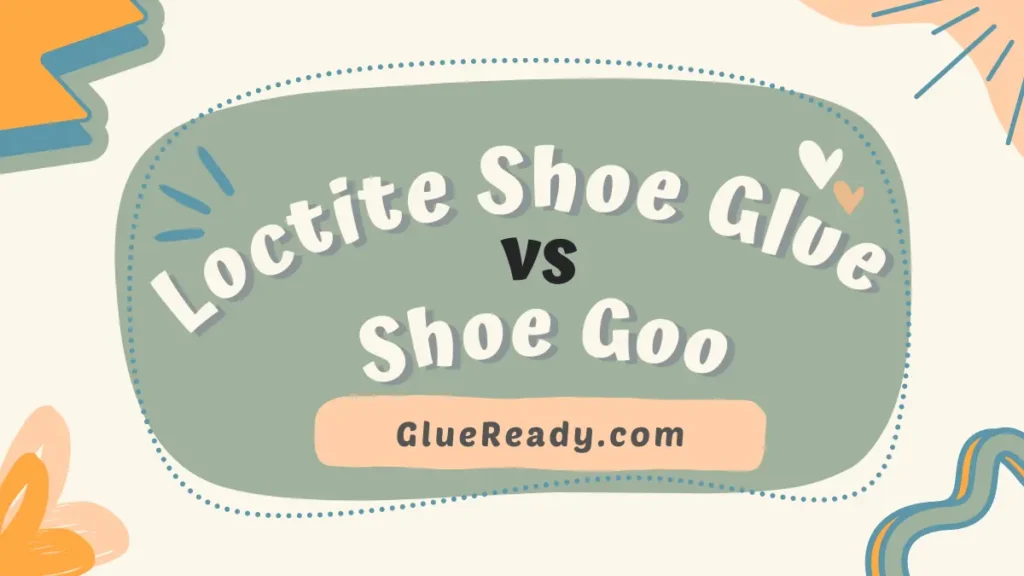E6000 vs E6000 Plus | What’s The Difference?

E6000 adhesives are industrial and versatile adhesives. But there is an updated version of E6000 glue called E6000 Plus. There are many similarities between them, but they aren’t the same.
E6000 and E6000 plus adhesives are almost the same, but E6000 plus has no odor while E6000 has.
In this article, I will provide a comparative analysis of E6000 vs E6000 Plus, highlighting their features, applications, and performance.
Read More: Gem Tac vs E6000
Overview of E6000 Multipurpose Adhesive
The E6000 multipurpose adhesive is polyurethane-based and has been around since the late 1980s. This industrial-strength adhesive can be used on metal, plastic, wood, leather, vinyl etc.
It has a high tensile strength of 3200 PSI, which means it can withstand a lot of pressure and force. It also has a high elasticity of over 900%, which means it can stretch and bend without breaking or cracking.
E6000 is easy to use and dries quickly. It will get tacky in a few minutes and cure within 24 to 72 hours.
It dries clear and can be painted over if desired. It is also waterproof, UV-resistant, and temperature-resistant, making it suitable for indoor and outdoor projects.

Overview of E6000 Plus Multipurpose Adhesive
E6000 Plus is a newer version of E6000 that was launched in 2019. This glue is also polyurethane-based and bonds fabric, glass, ceramic, gems, concrete, fiberglass, metal, and plastics.
It has similar features and benefits as E6000, such as high strength, flexibility, water resistance, UV resistance, and temperature resistance.
The main difference between the E6000 and E6000 Plus is that E6000 Plus has no odor at all. Because of its premium polymer technology, it eliminates odors. This makes it more user-friendly and environmentally friendly than the E6000.

E6000 vs E6000 Plus Comparison Table
| Feature | E6000 | E6000 Plus |
| Self-Leveling | Not self-leveling | Self-leveling |
| Odor | Strong | None |
| Tensile Strength | 3200 PSI | 3200 PSI |
| Elasticity | Over 900% | Over 900% |
| Drying time | 10 minutes | 5 minutes |
| Curing Time | 24 to 72 hours | 24 hours |
| Toxicity | Higher | Lower |
| VOCs | Higher | Lower |
| Adhesion to Plastics | Good | Better |
| UV Resistance | Moderate UV resistance | Enhanced UV resistance |
Differences Between E6000 and E6000 Plus
The main differences between E6000 and E6000 Plus are:
Odor
E6000 has a strong smell that some people may find unpleasant or harmful. It may also require ventilation when using it.
E6000 Plus has no odor at all, making it more user-friendly and safer to use in enclosed spaces.
Toxicity
E6000 contains solvents and VOCs (volatile organic compounds) that may cause health issues if inhaled or ingested. It may also damage some surfaces or materials if not used properly.
E6000 Plus does not contain any solvents or VOCs, making it less toxic and more environmentally friendly.
Drying Time
E6000 takes longer to dry than E6000 Plus. It takes 10 minutes to get tacky and 24 to 72 hours to cure completely.
E6000 Plus takes only 5 minutes to get tacky and 24 hours to cure fully. This means that E6000 Plus allows you to finish your projects faster and with less clamping time.
Choosing Between E6000 and E6000 Plus
When it comes to deciding between E6000 and E6000 Plus, it ultimately depends on your specific requirements and the nature of your project. Here are a few key points to consider:
Application
Both E6000 and E6000 Plus are suitable for a wide range of materials. However, if you require a faster curing time or need enhanced UV resistance, E6000 Plus may be the better choice.
Odor
If working in a well-ventilated area is a concern for you, the reduced odor in E6000 Plus may be a deciding factor.
Leveling
If you’re working on a project that requires a smoother and more even bond, E6000 Plus’s self-leveling properties might be advantageous.
Budget
E6000 Plus is an upgraded version and may be priced slightly higher than the original E6000. Consider your budget and the value you expect from the adhesive.
Frequently Asked Questions (FAQs)
How Strong is the E6000 Plus?
E6000 Plus is almost identical to E6000 adhesive. It is very strong, with a tensile strength of 3200 PSI.
How Long Does It Take for E6000 Plus to Dry?
It takes about 5-10 minutes for the E6000 Plus to dry and 24 hours to fully cure.
Does E6000 Glue Turn Yellow?
E6000 glue may turn yellow over time, especially if exposed to sunlight or heat. This may affect the appearance of your project, especially if you use it on clear or light-colored materials.
Is E6000 as Strong as Super Glue?
E6000 is not as strong as super glue in terms of drying time and ease of use, but it is stronger than super glue in terms of flexibility and durability. E6000 also has a higher shear strength of 7000 PSI, compared to 4000 PSI for super glue.
Read More: E6000 vs Super Glue
Final Thoughts
In conclusion, both E6000 and E6000 Plus are exceptional adhesive products that have their own unique features and benefits.
E6000 is a reliable choice for various applications, while E6000 Plus offers improved curing time, enhanced UV resistance, reduced odor, and self-leveling properties.
Hopefully, this article about E6000 vs E6000 Plus has helped you to understand these two products.
Regardless of your choice, both E6000 and E6000 Plus will undoubtedly deliver reliable and long-lasting bonds for your projects.






